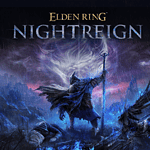The world of Dungeons & Dragons is undergoing one of its most ambitious overhauls since the launch of 5th Edition, and 2025 marks a pivotal moment in the game’s evolution. With the release of the brand-new Monster Manual on February 18, 2025, Wizards of the Coast has now completed its trilogy of revised core rulebooks, following the Player’s Handbook and Dungeon Master’s Guide updates in late 2024. These revisions not only streamline gameplay but also breathe new life into the system for veterans and newcomers alike. Here’s everything you need to know about the changes, the design philosophy behind them, and what’s coming next for the world’s most iconic tabletop RPG.
A Closer Look at the 2025 Monster Manual
The 2025 Monster Manual is more than just a reprint with shinier art—it’s a total revamp designed to bring monsters in line with the modern 5E ruleset while making combat smoother, encounters more flavorful, and the DM experience less cumbersome. It contains over 500 stat blocks, with 87 brand-new monsters, many of which represent entirely new archetypes or evolutions of old favorites.
Notable New Additions:
- Blob of Annihilation – a terrifying ooze born from extraplanar energies.
- Primeval Owlbear – a brutal, prehistoric variant of the iconic creature.
- Arch-Hags – master manipulators that now come with lair actions and tailored magical abilities.
Each stat block has been rebalanced with current player power levels in mind, drawing from years of community feedback and playtest data.
Simplified & Speedier Combat
One of the biggest pain points in 5E was the number of dice rolls and nested effects during combat. The new Monster Manual fixes this by ensuring that monsters’ secondary effects are typically triggered either on a hit or a failed save—not both. This reduces mental overhead and lets DMs keep the story flowing without bogging down in mechanics.
Upgraded Legendary Creatures
Legendary and lair actions are no longer buried in sidebars—they’re fully integrated into stat blocks. Some monsters now gain extra legendary resistances and unique actions when in their lairs, making high-level boss fights feel more cinematic and dangerous. Dragons in particular have seen massive updates, with spellcasting folded into their abilities to allow for more varied and intelligent behavior in combat.
Quality of Life Enhancements
- Initiative values appear right next to Armor Class.
- Ability scores include clear modifiers and saving throw bonuses.
- A new “Gear” section makes it easier to track monster loot or equipment.
- Rich flavor text and quotes make monsters feel more alive.
- Random tables help DMs customize encounters on the fly (e.g., how a Cambion got its powers, or what drives a Drider’s madness).
The Core Rulebook Trilogy Is Complete
With the Monster Manual’s release, the 2025 ruleset is fully formed. Here’s a quick recap of the other two foundational books:
🧙 Player’s Handbook (2024)
- Overhauled classes, subclasses, and spell lists for better balance and clarity.
- Introduced streamlined character creation, improved feat systems, and reworked spellcasting rules.
- Added more inclusive lore and narrative flexibility.
🧠 Dungeon Master’s Guide (2024)
- Rewritten for ease of use, particularly for new DMs.
- Includes enhanced encounter-building tools, treasure generation, and advice for worldbuilding.
- A stronger emphasis on running flexible, narrative-driven games.
Together, these three books modernize the 5E experience without upending what made the edition so beloved.
What’s Next? A New Wave of D&D Releases
Wizards of the Coast is taking full advantage of this momentum. Several major products are on the 2025 release calendar, each designed to integrate seamlessly with the new ruleset:
🐉 Dragon Delves – July 8, 2025
A collection of ten dragon-centric adventures. Expect epic hoards, fiery breath weapons, and complex social interactions with ancient beings who are more than just monsters.
⚙️ Eberron: Forge of the Artificer – August 19, 2025
A long-awaited update to the fan-favorite Eberron setting, this book will include:
- A fully revised Artificer class
- Enhanced airship combat mechanics
- New magic item crafting rules and setting lore
📖 Forgotten Realms Player’s Guide – November 11, 2025
Offers new backgrounds, subclasses, feats, and regional lore to customize your character for adventures in Faerûn.
🗺️ Forgotten Realms Adventure Guide – November 11, 2025
A companion book for DMs that expands on five regions beyond the Sword Coast, with maps, faction info, and ready-to-run story arcs.
🏰 Starter Set: Heroes of the Borderlands – TBA 2025
An all-new introductory experience that reimagines the classic Keep on the Borderlands. Built for the 2025 rules, this box set is ideal for onboarding new players.
A Milestone Year: D&D Turns 50
This overhaul coincides with Dungeons & Dragons’ 50th anniversary. To celebrate:
- Wizards launched SRD 5.2 under the Creative Commons license, allowing third-party creators to build content using the updated 2024 rules.
- A digital tabletop project, Project Sigil, is in development, aiming to provide an immersive 3D D&D experience for online play.
- Over 85 million people interacted with the brand in the past year—through streaming, games, books, or the tabletop.
Critical Role, the powerhouse of D&D liveplay content, is also expanding into book publishing with original fiction, campaign novelizations, and tie-ins that build the lore of their Exandria setting.
The Bottom Line
The 2025 refresh of Dungeons & Dragons is more than a cosmetic update. It represents a confident reimagining of the fifth edition that prioritizes smoother play, balanced encounters, and accessible design. With a massive year of content ahead—including new adventures, setting guides, and even digital tools—D&D is entering a bold new era without losing the magic that made it a global phenomenon. Whether you’re a returning adventurer or just picking up your first set of dice, the world has never been more ready for your story.
The 5e Point Buy System Explained
Point Buy is a reliable method for creating D&D characters, offering a balanced approach to ability score distribution. The system gives players 27 points to spend on their character’s stats, starting with a base of 8 in each ability. The Point Buy System in D&D 5e allows players to customize their character’s strengths and weaknesses without relying on random dice rolls, making it a popular choice for campaign play and organized events.
Point Buy is a balanced character creation method in D&D 5e that gives players control over their character’s ability scores. This system uses a pool of points to purchase scores for each ability, allowing for customization while maintaining game balance.
- Point Buy uses 27 points to purchase ability scores starting from a base of 8 in all stats, providing balanced character creation.
- Higher ability scores cost progressively more points, requiring strategic decisions about character strengths and weaknesses.
- Some homebrew variants expand the traditional 8-15 score range to 6-17, offering greater customization while maintaining game balance.
Basics of Character Creation
In D&D 5e, character creation involves several key steps, with determining ability scores being one of the most important. The Point Buy system is one of three official methods for assigning these scores, alongside Standard Array and Rolling Dice.
Point Buy starts with all six abilities (Strength, Dexterity, Constitution, Intelligence, Wisdom, and Charisma) at a base value of 8. Players then receive 27 points to distribute among these abilities.
The system sets limits on how high scores can go before character creation. Typically, no ability score can exceed 15 before racial bonuses are applied. This prevents characters from starting with extremely powerful statistics.
Calculating Ability Scores
Point Buy uses a scale where higher scores cost progressively more points:
| Score | Cost |
|---|---|
| 8 | 0 |
| 9 | 1 |
| 10 | 2 |
| 11 | 3 |
| 12 | 4 |
| 13 | 5 |
| 14 | 7 |
| 15 | 9 |
This pricing structure means that raising a score from 14 to 15 costs 2 points, while raising from 8 to 9 costs only 1 point. Players must carefully consider where to allocate points.
A balanced character might have scores like 15, 14, 13, 12, 10, 8 – using all 27 points. Characters focused on specific abilities might prioritize Dexterity for rogues or Wisdom for clerics, while reducing less important abilities.
Advantages of Point Buy
Point Buy creates a level playing field for all players in a campaign. Unlike dice rolling, which can create significant power disparities, Point Buy ensures everyone starts with the same resource allocation.
This system grants flexibility while maintaining balance. Players can tailor ability scores to match their character concept and class requirements, ensuring their Dexterity-based rogue or Charisma-focused bard has appropriate strengths.
The system also prevents the frustration of poor dice rolls potentially ruining a character concept. Players know exactly what they’re getting and can plan their character progression accordingly.
For dungeon masters, Point Buy simplifies campaign balancing since all characters have equivalent starting power. This makes encounter design more predictable and ensures no player feels significantly weaker than others at the table.
Latest Updates and Changes
The D&D 2024 Player’s Handbook brings significant revisions to the Point Buy system. These changes reflect both official updates from Wizards of the Coast and community-driven adaptations that have emerged in response to the evolving game mechanics.
Official Announcements
The 2024 Player’s Handbook maintains the Point Buy system as an optional method for determining character ability scores. Players still allocate points across six core attributes: Strength, Dexterity, Constitution, Intelligence, Wisdom, and Charisma.
The system continues to work alongside other character creation methods like Standard Array and Rolling for stats. With the introduction of new species options in the 2024 handbook (Aasimar, Dragonborn, Dwarf, Elf, Gnome, Goliath, Halfling, Human, Orc, and Tiefling), character optimization strategies have expanded.
Many players have noted the relationship between Point Buy and the increased number of feats available in the 2024 rules. This connection has become particularly relevant with the introduction of new stat capstone abilities that can push attributes beyond 20.
Community Feedback and Adjustments
The D&D community has actively discussed potential adjustments to the Point Buy system. Many players have questioned whether the standard point allocation remains balanced with the introduction of numerous new feats and expanded ability score capstones.
Some Dungeon Masters have implemented homebrew modifications to the Point Buy system, allowing for more points or different cost structures. These adjustments aim to accommodate the expanded character options available in the 2024 rules.
Common homebrew adjustments include:
- Increased point pools (from 27 to 30-32 points)
- Modified cost tables for higher ability scores
- Integration with background features for more customization
These community-driven changes reflect the ongoing evolution of character creation in response to the expanded 2024 ruleset. Players are encouraged to check with their DMs about which Point Buy variant is being used in their campaigns.
Strategy and Optimization
Point buy in D&D 5e offers strategic ways to build effective characters. Smart allocation of ability score points can make or break your character’s performance in different situations.
Maximizing Efficiency with Point Buy
One popular approach is the 15, 15, 14, 10, 8, 8 distribution. This setup prioritizes your character’s main abilities while allowing room for racial bonuses to reach 16+ in critical stats. For spellcasters, focusing on your primary casting stat is essential since it affects spell save DCs and spell attack bonuses.
For martial characters, strength or dexterity should be prioritized depending on your weapon choice. Constitution is valuable for all classes as it directly impacts hit points and concentration checks.
Half-feats can be strategically planned with point buy. Starting with odd numbers (15, 13) lets you round up with these feats at level 4, effectively getting two benefits from one feat.
Custom origin rules allow for flexible stat distribution (+2 in one ability and +1 in two others), which opens up more build possibilities.
Common Pitfalls to Avoid
Spreading points too evenly across abilities often results in a character who is mediocre at everything. This approach reduces effectiveness in combat and ability checks where specialists shine.
Neglecting initiative (based on Dexterity) can leave characters acting last in combat, potentially missing opportunities to support allies or prevent enemy actions.
Many players undervalue their character’s secondary abilities. For example, a wizard with low Constitution will struggle to maintain concentration when damaged, regardless of their Intelligence score.
Dump stats (typically 8s) should be chosen carefully. A low Strength can hamper a character’s carrying capacity, while low Wisdom makes them vulnerable to many dangerous effects and gives disadvantage on perception checks.
Remember that point buy is about making meaningful choices rather than creating a “perfect” character. Strategic weaknesses can create interesting roleplay opportunities.
Character Backgrounds and Their Impact
Backgrounds have evolved significantly in the 2024 Player’s Handbook, creating stronger connections between a character’s origin story and their initial abilities. The new system ties backgrounds directly to stat bonuses and feats, making your character’s past a crucial part of the point buy process.
Incorporating Backgrounds in Point Buy
When using the point buy system in D&D 5e, backgrounds now play a more significant role in shaping your character’s abilities. The 2024 rules link backgrounds to specific ability score improvements and unique origin feats. This integration means players must consider their character’s backstory during the point buy process.
Each background typically offers a +2 to one ability score and a +1 to another. The Criminal, Farmer, Merchant, and Sailor backgrounds have become particularly popular choices because they provide Constitution bonuses, which benefit almost every character class.
Players should select a background that complements their intended build. For example, a Wizard might benefit from a background that boosts Intelligence, while a Fighter might prefer one with Strength bonuses.
Example Backgrounds: Noble and Merchant
The Noble background represents characters with privileged upbringings and connections to influential families. This background typically provides bonuses to Charisma-based skills like Persuasion and may grant access to resources through family wealth or status.
Nobles often receive feats that enhance their social capabilities, making them excellent party faces for diplomatic situations. When using point buy, pairing Noble with classes like Bard or Paladin creates synergy through shared Charisma emphasis.
The Merchant background has become a favorite choice in the 2024 rules because it offers a Constitution bonus alongside business-savvy skills. Merchants excel at negotiation, appraisal, and managing resources.
This background pairs well with almost any class due to its Constitution boost. A Merchant background can give spellcasters more survivability or enhance a frontline fighter’s stamina. The associated feat often provides economic advantages or bargaining skills that prove useful in urban campaigns.
Equipment and Magic Items
Character equipment and magic items are crucial elements in D&D 5e that significantly impact gameplay. The newest guidelines provide updated approaches to starting gear and magic item distribution that help balance player power levels while maintaining game enjoyment.
Starting Gear Choices
The point buy system’s latest updates have brought more clarity to starting equipment selection. Characters now have more flexible options based on their class and background combinations.
Players can choose between taking the standard gear package or selecting items based on a gold allowance. This approach gives greater customization while ensuring all characters start with appropriate equipment.
For a level 5 character, the recommended starting gold is approximately 250-500 gold pieces, depending on campaign difficulty. This allows for basic gear plus a few uncommon items.
The 2024 updates emphasize balanced starting equipment that matches character concepts without providing unfair advantages. Background equipment now complements class gear more effectively, eliminating redundancies found in earlier versions.
Magic Item Considerations
Magic items remain a core element of character advancement in 5e. The newest guidelines recommend specific numbers of magic items per tier of play, with the DMG now including a magic item tracker for DMs.
For low-level characters (1-4), focus on utility items rather than pure combat enhancements. Items like Boots of Elvenkind or a Bag of Holding provide versatility without unbalancing encounters.
By level 5, characters typically should have 2-3 permanent magic items of varying rarities. The “Buying a Magic Item” activity now has clearer rules requiring both gold investment and time, preventing players from simply purchasing powerful items.
Popular low-level magic items include:
- Weapon +1
- Cloak of Protection
- Winged Boots
- Wand of Magic Missiles
The Role of Rarity in Equipment Selection
The rarity system (Common, Uncommon, Rare, Very Rare, Legendary) remains fundamental to magic item distribution. The latest guidelines reinforce matching item rarity to character level.
For point buy characters, magic item allocation should be standardized across the party. The recommended distribution by level 5 is:
- 1-2 Uncommon items
- 0-1 Rare items
- No Very Rare or Legendary items
Attunement rules continue to limit powerful item combinations. Characters can attune to a maximum of three items, forcing strategic choices about which magical benefits to utilize.
The 2024 DMG emphasizes rarity as a guide, not a rigid rule. Some Uncommon items might be more powerful in specific campaigns than Rare items. DMs should consider campaign context when distributing magic items, not just their listed rarity.
Spellcasting and Feats
The 2024 Player’s Handbook has updated how feats and spellcasting interact with character creation systems like point buy. These changes affect how players optimize their characters, especially when balancing ability scores with magical capabilities.
Integrating Spells with Point Buy Characters
The Magic Initiate feat has been significantly redesigned in the 2024 rules. Previously, it granted two cantrips and a 1st-level spell that couldn’t be cast using your own spell slots. The new version offers more flexibility, allowing players to cast the chosen 1st-level spell using their own spell slots if they have them.
This change makes Magic Initiate more valuable in point buy systems. Players can now allocate fewer points to their primary spellcasting ability and compensate with this feat. For example, a fighter might take Magic Initiate to gain utility spells without investing heavily in Intelligence or Wisdom.
When building a point buy character with spells, consider which ability score will power those spells. Remember that cantrips scale with character level, not ability scores, making them useful even with moderate ability scores.
Key Feats for Different Builds
The 2024 PHB includes 75 total feats, many of which synergize well with specific point buy strategies.
Alert remains a powerful choice for characters who need to act early in combat. It no longer grants +5 to initiative but instead prevents surprise and grants advantage on initiative rolls. This makes it less dependent on Dexterity scores, allowing more point buy flexibility.
Healer has been enhanced to scale with proficiency bonus, making it valuable throughout a character’s progression without requiring high Wisdom.
Skilled grants proficiency in three skills of choice, perfect for characters who spread their point buy thin and need versatility.
Tough adds 2 hit points per level, compensating for lower Constitution investments in point buy. This remains unchanged but continues to be valuable for glass cannon builds.
Feat Impact on Point Buy Attributes
Feats can significantly alter how players approach point buy by compensating for lower ability scores or enhancing already strong attributes.
With the 2024 rules, many feats no longer have ability score prerequisites. This creates more flexibility in point buy systems, as players can take feats earlier without needing to reach specific ability thresholds.
Some builds benefit from concentrating points in one ability while using feats to shore up weaknesses. For example, a wizard might maximize Intelligence while taking the Tough feat to compensate for lower Constitution.
Alternatively, players can spread points more evenly across abilities and use feats like Skilled to gain proficiencies they might otherwise miss from lower ability modifiers.
This approach to character building creates more diverse and customized characters, as point buy and feats work together to define a character’s capabilities rather than functioning as separate systems.
Gameplay Mechanics and Combat
Combat remains a central pillar of D&D experience in the 2024 rules update. Recent clarifications aim to streamline battle mechanics while keeping the tactical depth players enjoy.
Initiative and Turn Order
The 2024 rules maintain the traditional D20 + Dexterity modifier for initiative rolls, but introduce subtle refinements. Characters now have clearer options for readying actions, with the rules explicitly stating that readied actions occur immediately after the triggering condition.
Group initiative has received official support as an optional rule, allowing DMs to have all players roll once, then act in any order before enemy turns. This speeds up gameplay considerably, especially with larger parties.
The “surprised” condition has been simplified, now applying only for the first round of combat. Surprised creatures can’t move or take actions but can still react after their first turn ends.
Damage Calculation and Hit Dice
Damage calculation has been streamlined in the 2024 update. Critical hits now add one extra weapon die rather than doubling all dice, making damage more predictable and reducing extreme swings.
Hit dice usage has been clarified, with players explicitly allowed to spend any number of available hit dice during short rests. The rules now specify that temporary hit points don’t stack, using only the highest value.
Resistance and vulnerability mechanics remain unchanged, halving or doubling damage respectively. However, the system now includes clearer guidelines for determining damage types in unusual circumstances, providing DMs with better decision-making frameworks.
Healing and Resting Dynamics
The 2024 rules enhance healing mechanics with more structured guidelines. Healer’s kits now restore 1d6 + the user’s proficiency bonus when used, making them more valuable than in previous editions.
Long rests recover all hit points and half your maximum hit dice (minimum of one). The rules clarify that characters can engage in light activity during long rests, including two hours of watch duty without interrupting the benefits.
Short rests remain one-hour periods where hit dice can be spent. However, the new rules specify that certain class features now recharge on short rests, creating more balanced gameplay between classes that rely on long rests versus short rests.
Role-Playing and Story Integration
Point buy system affects how players engage with D&D stories and create meaningful character journeys. The choices made during character creation directly shape how players interact with the game world and develop their personal narratives.
Character Development Through Lore
When using point buy, players can deliberately align their character’s abilities with their backstory. A character who grew up as a blacksmith’s apprentice might reasonably have higher Strength, while someone raised in a scholarly environment could justify higher Intelligence scores.
This mechanical alignment helps players create more consistent characters whose abilities reflect their life experiences. Many DMs have found that point buy encourages players to think deeply about why their character has certain strengths and weaknesses.
Lore Integration Examples:
- A character with a low Charisma score might have a backstory involving social isolation
- High Wisdom could represent mentorship from a village elder or spiritual guide
- Balanced scores might indicate a well-rounded education or diverse life experiences
The point buy system prevents the “accidental hero” syndrome where a character’s abilities contradict their established background.
Narrative Complications and Allies
Point buy creates balanced characters who must rely on allies and clever solutions rather than overwhelming personal power. This encourages more cooperative gameplay and richer storytelling.
Characters with strategic weaknesses often seek out NPCs who complement their abilities. A wizard with poor physical attributes might befriend a local guard or hire muscle for protection, creating natural story hooks.
Story Elements Enhanced by Point Buy:
- BBEGs can be designed with specific counter-strategies to the party’s composition
- Encounters become more meaningful when they target character limitations
- Allies naturally emerge to fill capability gaps the party cannot address
Many DMs report that point buy parties develop deeper connections to the game world since they must interact with it more frequently to overcome challenges. Players learn to use environment, NPCs, and creative problem-solving rather than relying solely on high ability scores.
Classes and Proficiencies
Choosing the right ability scores through point buy affects how well your character performs in their class. The 5e system offers flexibility in customizing characters, with recent updates providing more options for weapon proficiencies and class abilities.
Balancing Class Abilities with Point Buy
The standard point buy system allows players to customize their character’s six ability scores based on class needs. Most classes require specific primary abilities to function effectively.
Spellcasters like Wizards and Sorcerers need high Intelligence and Charisma scores, respectively. Fighters and Barbarians benefit from high Strength, while Rangers and Monks need good Dexterity scores.
A popular point buy distribution is 15, 15, 14, 10, 8, 8. This approach focuses on primary stats while allowing for racial bonuses to reach 16 or 17 in key abilities.
Some DMs allow alternative systems where players can trade weapon proficiencies for additional point buy resources. This creates more customization options while maintaining game balance as outlined in the DMG.
Artificer Class and Crafting Proficiency
The Artificer class stands out with its unique relationship to tool proficiencies and crafting. Unlike other classes, Artificers gain multiple tool proficiencies that directly enhance their magical abilities.
Artificers start with proficiency in thieves’ tools, tinker’s tools, and one other artisan’s tool of their choice. These proficiencies aren’t just flavor—they’re central to how Artificers create magic items and infusions.
When allocating point buy for an Artificer, Intelligence should be the highest score (ideally 15 before racial bonuses). Constitution and Dexterity work well as secondary abilities at 14 and 13 respectively.
Recent updates have expanded the Artificer’s crafting capabilities, making tool proficiencies more valuable. Some campaigns now allow Artificers to substitute certain weapon proficiencies for additional tool proficiencies, further specializing in their crafting abilities.
Special Conditions and Effects
In D&D 5e point buy systems, certain conditions and effects can dramatically impact character creation and gameplay. These elements often have quantifiable values that can be traded or purchased as part of a character’s development.
Understanding Invisibility and Stealth
Invisibility ranks among the most powerful conditions in the game, with significant point value in character creation systems. When a creature becomes invisible, they gain advantage on Dexterity (Stealth) checks and attacks, while attacks against them suffer disadvantage.
Recent updates have clarified how invisibility interacts with passive perception checks. An invisible creature isn’t automatically hidden – they must still make a Stealth check to conceal their presence completely.
Some point buy systems now assign specific values to abilities that grant invisibility. For example, racial invisibility abilities might cost 4-6 points, while class features granting limited invisibility might be valued at 2-3 points.
The 2024 rules have refined how invisible creatures interact with area effects. Creatures with blindsight or tremorsense can detect invisible creatures without penalties, making these senses more valuable in point buy systems.
Handling Wounds and Recovery
The wound system has received significant updates in recent point buy variations. Characters now have more options for managing damage beyond the standard hit point system.
Lingering injuries may require specific healing methods beyond standard rest. Some point buy systems allow players to purchase resistance to certain wound types or accelerated healing abilities.
Constitution scores have increased in value within point buy systems due to their impact on wound recovery. Each point of Constitution above 14 might cost more than standard ability improvements.
New recovery mechanics include:
- Short rest wound stabilization
- Long rest injury healing
- Special material components for magical healing
Feats related to wound recovery have been assigned specific point values in expanded point buy systems, typically costing 2-3 points for minor benefits and 4-5 for major healing advantages.
Rituals and Unique Spell Effects
Ritual casting has been revalued in recent point buy systems. The ability to cast spells as rituals without expending spell slots now has a quantifiable point cost during character creation.
Some campaigns assign specific point values to ritual knowledge, separate from regular spellcasting ability. Players can purchase ritual knowledge at a reduced cost compared to full spellcasting capability.
Ritual components have standardized costs that integrate with point buy systems. Rare components might require additional character points or background elements to access regularly.
Unique spell effects that impose conditions like paralysis or petrification have standardized values in expanded point buy systems. Spells that cause these conditions are weighted similarly to their average damage output for point calculation purposes.
The 2024 updates have balanced ritual casting more effectively with other magical abilities, making it a more attractive option in point buy character creation.
Campaign Settings and Variations
Different campaign settings offer unique approaches to character creation. Point buy systems can be adapted to match the themes and power levels of various D&D worlds and related games.
Adapting Point Buy to Eberron
Eberron’s pulp adventure setting encourages heroic characters with distinctive abilities. The standard point buy system works well here, but some DMs modify it to reflect Eberron’s magical technology and intrigue.
For Eberron campaigns, players might receive bonus points (typically 2-4 extra) to represent the generally more capable heroes of this setting. This aligns with Eberron’s “wide magic” concept, where magical abilities are more common.
House Cannith artificers and Dragonmarked characters particularly benefit from customized ability scores. Some Eberron DMs allow specialized distributions that give bonuses to Intelligence for artificers or Constitution for warforged characters.
Baldur’s Gate 3 and Point Buy Implications
Baldur’s Gate 3 has influenced how many tabletop players approach point buy. The game uses a modified 27-point system that’s slightly more generous than standard D&D rules.
BG3 players can distribute points with fewer restrictions, allowing for more extreme ability score combinations. This has led some tabletop DMs to adopt similar flexibility in their campaigns.
The popularity of the video game has caused more players to request point buy over standard array or rolling. Many new players coming to tabletop D&D from BG3 expect similar character creation options.
Some DMs now incorporate “origin character” concepts from BG3, offering pre-built backgrounds with suggested point distributions while still allowing customization through the point buy system.
Frequently Asked Questions
Point buy systems in D&D 5e have evolved over time, with recent updates bringing changes to how players can create and customize their characters. These changes affect stat distribution, ability score limits, and overall character power levels.
What are the recent changes to the 5e point buy system?
The standard point buy system in D&D 5e traditionally gives players 27 points to spend on their ability scores. Players start with all stats at 8 and can increase them by spending points.
Higher ability scores cost more points to purchase. For example, raising a stat from 14 to 15 costs more than raising it from 8 to 9.
Recent discussions have centered around modifying this system to give players more flexibility in character creation while maintaining game balance.
How does the new point buy system in 5e differ from the standard array method?
The standard array provides preset scores (15, 14, 13, 12, 10, 8) that players assign to abilities. Point buy allows more customization by letting players decide where to allocate their points.
The point buy system lets players create unique stat distributions tailored to specific character concepts. This provides greater flexibility than the standard array’s one-size-fits-all approach.
Some players prefer point buy because it allows strategic decisions about character strengths and weaknesses, while others prefer the simplicity of standard array.
What updates have been made to point buy rules in the latest version of DnD?
Recent D&D updates have introduced discussions about allowing more points in the point buy system. Some tables are experimenting with higher point allocations to create more powerful characters.
The traditional 27 points remains the official standard, but community variations have emerged. These house rules give players anywhere from 30 to 90 points to spend.
These modifications aim to create heroes who feel exceptional from the start rather than average characters who grow into their potential.
What enhancements have been introduced to the 5e point buy system in 2024?
In 2024 discussions, some D&D developers have considered integrating Ability Score Improvements (ASIs) with the point buy system. This would connect feats and ability score increases more directly to character creation.
One proposed enhancement is a “No Weakness” option that would increase a character’s lowest ability score by 1, up to a maximum of 13. This could be repeated three times.
These changes aim to reduce the number of characters with severe weaknesses in certain ability scores while maintaining game balance.
How does the updated point buy method impact character creation in DnD 5e?
The updated point buy methods give players more agency in creating exactly the character they envision. This can lead to more optimized characters that excel in their chosen roles.
More generous point buy systems may result in characters with fewer weaknesses. This can make gameplay smoother but might reduce the interesting challenges that come from character limitations.
These changes primarily affect the early game experience, as ability score differences become less significant at higher levels when magical items and class features play larger roles.
What are the professional community’s opinions on the revised point buy system for DnD 5e?
Professional D&D players and DMs have mixed opinions about expanded point buy options. Some appreciate the flexibility and stronger starting characters, while others worry about game balance.
Some community members believe the standard 27-point system is a “trap” that creates weaker characters compared to rolling for stats. They argue increasing the point pool creates more balanced play experiences.
Others caution that very high point buy allocations (like 90 points) would create extremely powerful characters that might trivialize early game challenges and unbalance the game.






